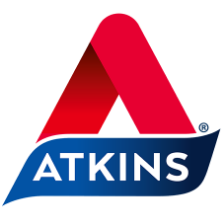- Get inspired
- Atkins Blog
- Working Out on a Keto Diet
Whether you’re a soon-to-be former couch potato, weekend warrior, avid exerciser or in training for a competitive event, you can work out on a keto or low carb diet, especially when Atkins’ keto and low carb approach is easily customized to meet your keto exercise goals.
To show you just how far Atkins and exercise can take you, is Jonathan Clinthorne, Atkins’ Director of Nutrition and ultra-endurance athlete (he’s run over 50 ultramarathons). In this interview, he shares his tips for working out while in ketosis or on a low carb diet and his low carb approach to training for endurance events.
If you already exercise regularly, how long does it take to adapt to a keto or low carb diet?
In my experience, the absolute minimum for the adaptation is six weeks, but generally is more like two to three months for you to become a fat-burning machine. Also be aware that going low carb will make it a little more challenging for your body to hang on to water, so you’ll need to be extra diligent about hydration. If you’re a competitive athlete, plan your switch over to a keto or low carb diet when you have a break from competition and will be doing base building.
What are your tips for starting an exercise program if you’re on a keto or low carb diet?
This is actually a great time to start exercising, as you will be able to take advantage of your fat-adapted metabolism. However, I would really encourage you to start slow and easy with your exercise while in ketosis. It’s much better to start slowly and work into an exercise program than to try to go way too hard from the start.
Find a friend to work out with. They will help hold you accountable.
Do whatever form of exercise is interesting and exciting to you. If you like riding your bike, bike! If you like going to the gym, go to the gym and lift weights!
Make sure you’re getting enough electrolytes, like potassium. These can be lost in our sweat, and many of the typical foods that contain potassium are high in carbs, so getting enough potassium is more challenging on a low carb diet. Some of the best potassium-rich low carb foods include avocado, salmon, mushrooms, nuts and seeds and leafy greens.
What should you eat and drink before and after working out while on a keto or low carb diet?
Drinking 12 to 16 ounces of fluid, such as water or unsweetened coconut water, about an hour before a workout can really help with hydration, thus performance, during a workout. Watch out for sports drinks which are typically high in sugar.
Avoid fiber-rich foods one to two hours before a workout in order to limit any gastrointestinal side effects.
My favorite pre-keto workout snacks tend to be around 100 to 200 calories and include things like hard-boiled eggs, a couple tablespoons of peanut butter, string cheese, berries or a cup of coffee with heavy cream.
Keep your protein intake at 10 grams for your pre-workout snack if you are doing high-intensity interval training (HIIT) and make sure you’ve had a good hour to digest your snack before working out while in ketosis.
If you are focused on weight training, research shows pre-workout protein may actually help protein synthesis (muscle growth). Since you aren’t working out at the intensity of someone doing HIIT, you won’t run into the potential digestive issues, so you can eat 10 to 20 grams of protein about 30 minutes before your weight-training session. Once again, this can include hard-boiled eggs, a protein smoothie, Atkins® shake, or string cheese. Look for protein sources high in branched-chain amino acids, which will primarily come from high-quality animal proteins.
Plan on eating protein-rich foods within 30 minutes after your workout in order to get your body rebuilding and repairing itself. For me, it’s almost always a smoothie with berries and protein powder or an Atkins shake if I’m in a hurry. Any keto or low carb post-workout meal like a salad with fiber-rich veggies and protein such as chicken, fish or meat also fits the bill.
At the level of training that you do, how does your carb/protein/fat intake differ from a typical low carb diet and why?
This is a really important point, and I am so glad you asked. I adhere to the general principles of keto and low carb eating, as I consume about 10% of my calories from carbohydrates. The rest of my diet is generally about 65% fat and 25% protein. However, because I sometimes eat 3,500 to 4,000 calories a day, I may consume upwards of 100 grams of carbs in a day. I have actually measured my blood ketones, and I stay in ketosis despite consuming this many carbohydrates, because I am working out for two to three hours in a day. Overall, this means that I can choose from a larger variety of carbs than the typical low carb eater, although these carbs come from low-glycemic sources like sweet potatoes and legumes.
How has a low carb diet positively affected your sports performance?
I do a lot of really long endurance events, and a low carb diet helps me in a couple ways. The first is that by becoming better at burning fat, I have much more steady energy levels during my events. The typical human has tens of thousands of stored calories in their fat stores, but only a couple thousand calories of carbohydrates stored in their muscles, so by being fat adapted, I am able to use those nearly unlimited fat stores. We call this being “bonk proof.” The second way low carb can really benefit athletes is that it tends to cause athletes to slim down a little bit. For many sports, power vs. weight ratio is really important for overall performance. This is especially true for body-weight-based sports like CrossFit, as well as sports where you carry your weight for long distances like running and cycling. While you may not be able to put out more absolute power on low carb, you can go a lot faster with the power you put out, because you’re a little lighter. Theoretically this could also help with injury prevention as you reduce the load on your joints by being lighter.

Atkins Nutritionist



